Tea has a history of thousands of years in traditional Chinese culture, and there are specific meanings behind the types of tea consumed in different seasons. Drinking tea is a minor matter in daily life, yet one's understanding of tea can be discerned through their tea setup.
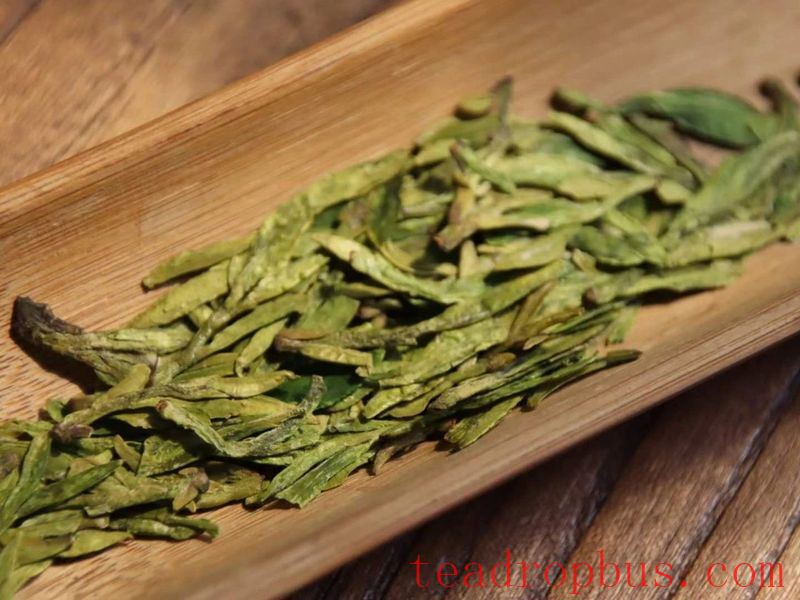
If tea has a spirit, then it can present different flavors in the hands of different tea brewers. Similarly, tea utensils also possess life, and the quiet conversation between tea and its vessels is a story that tea enthusiasts most wish to listen to and ponder. Tea utensils are formed by people and convey human thoughts and emotions. They are materializations of the human heart, and the life and spirit of tea utensils can be traced back to this origin.
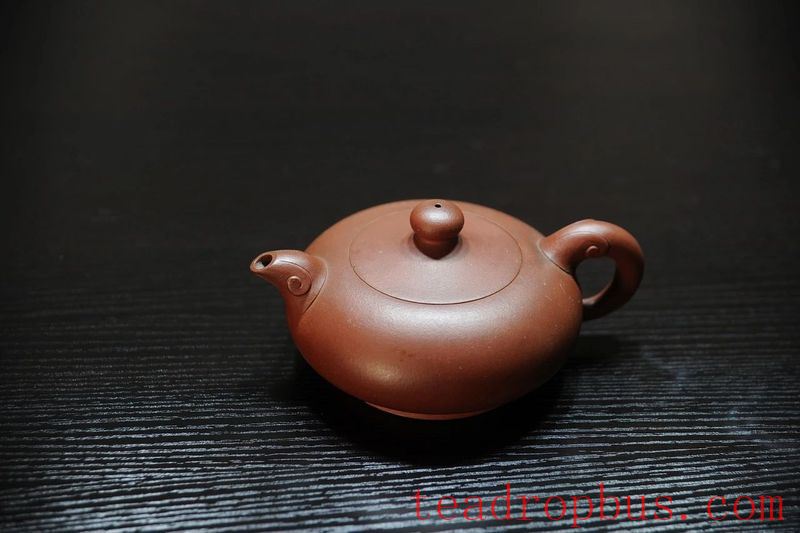
When drinking tea, what you imbibe is the tea itself, but what you observe is the interaction between people and the tea tray, which better reflects an individual's attention to detail in tea. A water-storing tea tray for the warm brewing method, a pot holder for dry brewing, the six essential tea tools emphasizing ceremony, a storage tea chest combining aesthetics and practicality, and a portable tea set for on-the-go—all these tea utensils will be introduced one by one.
The tea tray plays a special role in the tea setting, not as indispensable as a tasting cup or as favored as a clay teapot, yet it is a key supporting player in creating a good tea setting.
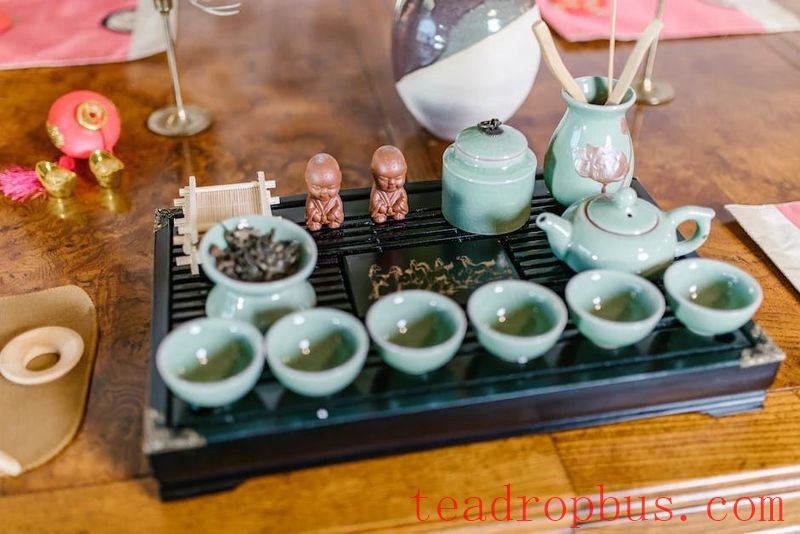
When brewing tea using the Gongfu method, an excellent water-storing tea tray is very necessary. In Gongfu tea, pouring hot water over the teapot and heating the exterior are emphasized, with the aim of maintaining the temperature inside the pot to extract the essence and flavor of the tea, improving the smoothness and complexity of the tea liquor. It may also be used for “nourishing the pot,” allowing the pot to develop a desired patina.
A suitable water-storing tea tray, which is aesthetically pleasing, does not take up too much space, and perfectly collects the hot water poured over the teapot, is crucial.
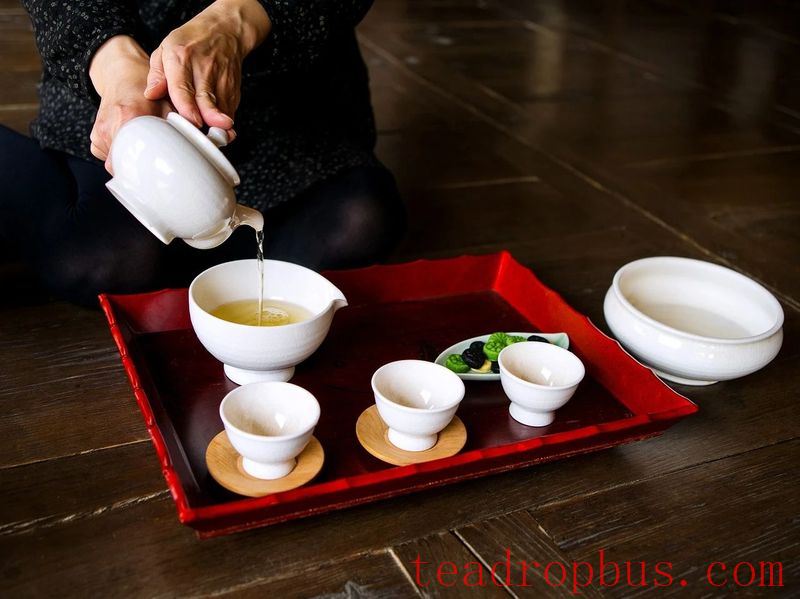
A pot holder primarily serves as a container to hold the main brewing vessel. As it is called a “pot holder,” it is mostly used to hold a teapot. The selection and matching of a pot holder can make the tea setting look comfortable and pleasing. The color, material, and shape should complement the tea setting and brewing vessel, making it convenient for brewing tea.
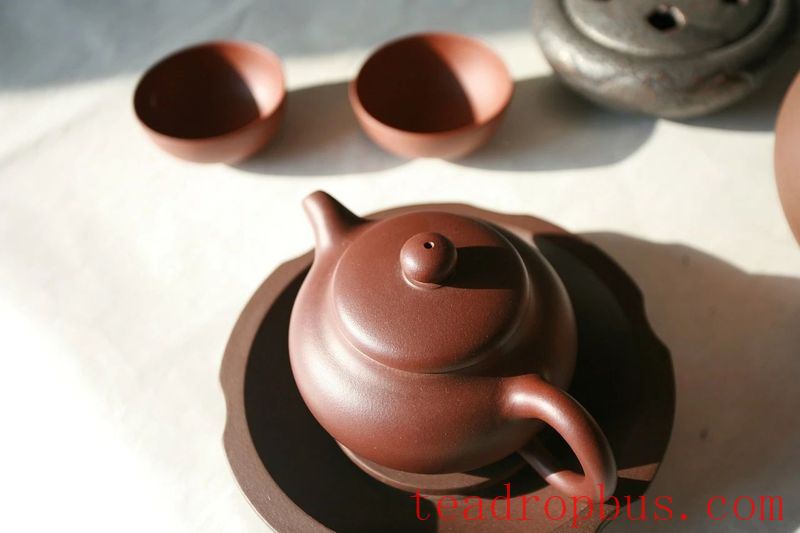
With the rise of the dry brewing method, pouring hot water over the teapot has become less common, aiming for a neat, tidy, and elegant tea table and setting. The primary function of a pot holder now lies more in its aesthetic contribution to the overall ambiance of the tea setting, while still serving to catch any spilled tea during brewing.
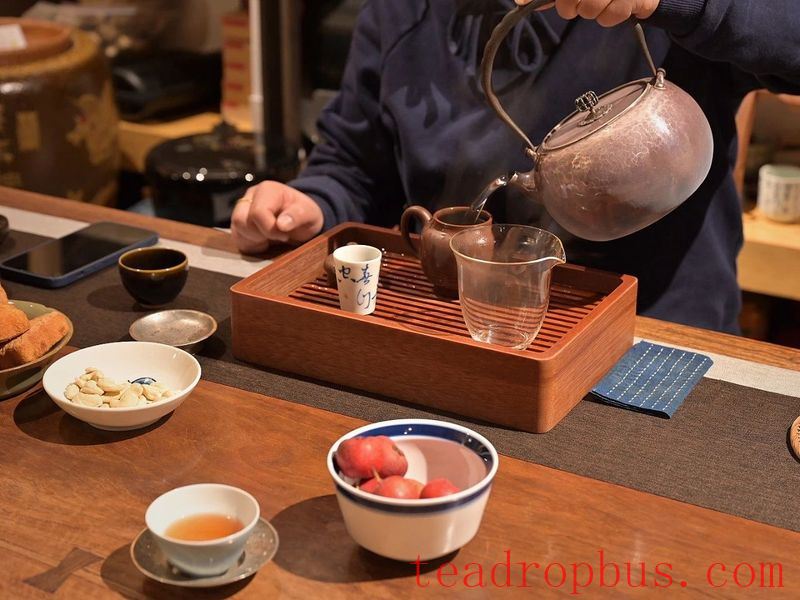
The Six Tea Tools, also known as the Six Gentlemen of Tea, refer collectively to the six tea brewing tools—tea needle, tea tongs, tea spoon, tea measure, tea funnel, and tea scoop—that are usually stored together in a tea tube.
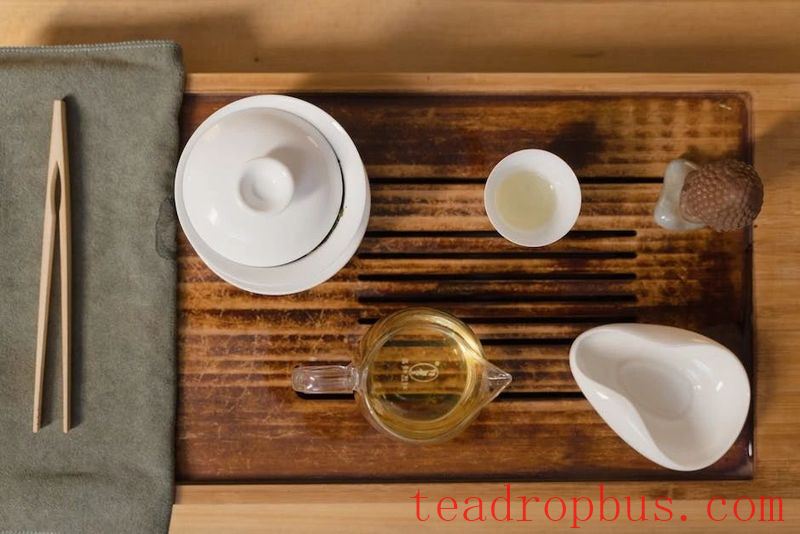
The tea tube is a container for storing tea utensils. The tea spoon is mainly used to scoop out steeped tea leaves from the teapot. After Steeping, the tea leaves often tightly fill the teapot, and since most teapot mouths are small, using the tea spoon is both more convenient and hygienic than using your hand.
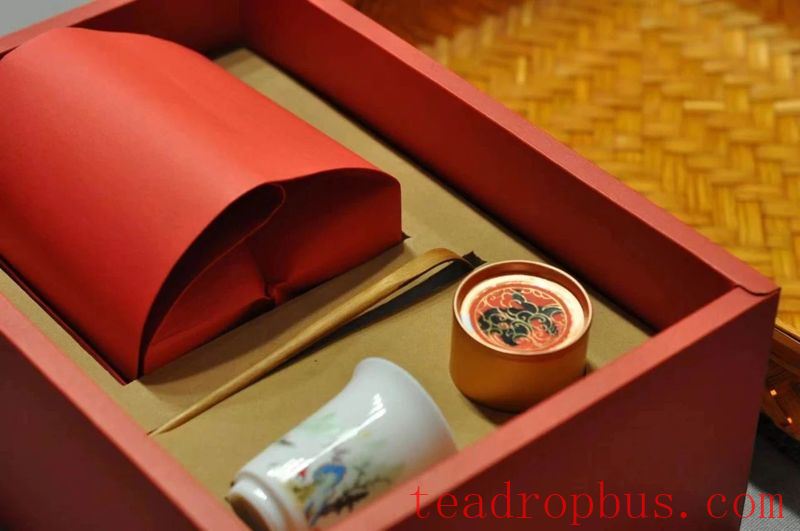
The tea funnel is placed over the teapot mouth when adding tea to guide the leaves into the pot and prevent them from falling outside.
The tea measure (tea scoop) is a tool for transferring tea into the pot.
The tea needle is used to clear the inner mesh (the strainer) of the teapot to ensure smooth water flow. It can also be used to distribute the tea evenly in the pot, placing broken leaves at the bottom and whole leaves on top after adding the tea.
The tea tongs (tea shovel) serve the same purpose as the tea spoon, removing tea residue from the pot. Some people also use it to handle the teacup for washing, which is both heat-resistant and hygienic.

Loving and understanding tea are all about self-indulgence. We pursue the joy that comes from brewing and drinking tea.
If there are copyright issues, please contact us to remove.